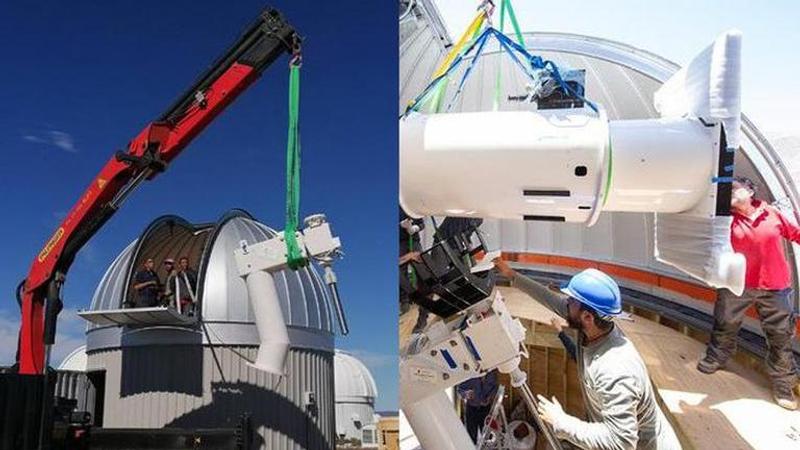Published 18:00 IST, February 1st 2022
NASA's enhanced ATLAS observatory to scan entire sky for 24 hrs to track killer asteroids
NASA-funded asteroid alert system 'ATLAS' has added two more telescopes to scan the entire night sky every 24 hours to look for hazardous asteroids.

The NASA-funded asteroid alert system named Asteroid Terrestrial-impact Last Alert System (ATLAS) has expanded its reach to the entire night sky to detect hazardous asteroids hurtling towards the Earth. Operated by the University of Hawaii's (UH) Institute for Astronomy (IfA), ATLAS became operational in 2017 and previously included two northern-hemisphere telescopes on Haleakalā and Maunaloa. Concerned that asteroids may strike from any direction, the collaborators have installed two additional telescopes in South Africa and Chile.
(Telescope unit in Haleakalā, Maui; image: University of Hawai'i)
'ATLAS is now all the sky, all the time'
Explaining the reason behind the expansion, John Tonry, IfA professor and ATLAS principal investigator said as per University of Hawaii's report-
An asteroid that hits the Earth can come at any time from any direction, so ATLAS is now all the sky, all the time.
The two new telescopes located at South Africa's Sutherland Observing Station and Chile's El Sauce Observatory have now made the asteroid alert system capable to scan the entire night sky every 24 hours. The reason behind choosing these locations was the access to the southern part of the sky and the time difference which allowed the observations at night during daytime in Hawaii. The UH first built the ATLAS telescopes under NASA’s Near-Earth Objects Observations Program, and became operational in 2017.
(Telescope unit in Maunaloa; image: University of Hawai'i)
Capabilities of the upgraded observatory
With the recent upgradation, the ATLAS telescopes can now photograph a chunk of sky 100 times larger than the full moon in a single exposure which would allow it to issue a warning 24 hours earlier before the approach of a 20-metre wide asteroid. Moreover, it could also provide a warning three weeks before a 100-metre-wide asteroid, capable of widescale destruction heads towards our planet. Scientists say that an asteroid of this scale strikes Earth, it can result in 10 times the destruction caused by the Tonga volcanic eruption in the Pacific Ocean.
The ATLAS system has discovered 700 near-Earth asteroids and 66 comets so far and is specially designed to detect objects that come as close as 3,84,000 kilometers to the Earth. Saying that an enhanced ATLAS complements the existing ground-based NEO (near-Earth object) search programs, IfA astronomer and ATLAS co-principal investigator, Larry Denneau added as per the University's report-
All these systems have different specialties, and together they are working to keep us safe from hazardous asteroids that could strike anywhere from days to decades into the future.
Image: Twitter/@uhmanoa
Updated 18:00 IST, February 1st 2022





